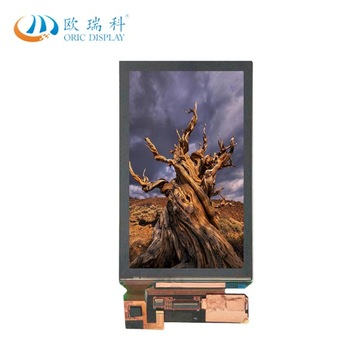Enterprise Name: Shenzhen Oric Electronics Co., Ltd.
Tel: +86-755-85276665
Mobile phone: +86-18924648655
Mailbox: Lisa@oriclcd.com
Fax: 0755-89480065
Office Address: 4th floor, Building B, No.48th,
Huanguan Middle Road, Guanhu street,
Longhua District, Shenzhen, China 518110
How to Image OLED-A Brief Talk on LCD Display Manufacturers

Now, you can use your imagination to your heart's content. Imagine that in the near future, our mobile phone may be a soft screen. You can bend and fold it. For sports enthusiasts, you can bend and fix it on your arm. Faced with a transparent computer screen, you can enjoy the beauty of technology. Even the walls of your home may be equipped with several light screens to display all kinds of things. Beautiful pictures, create a beautiful and harmonious atmosphere... Such a scenario may become a reality because of the emergence of OLED.
What is an OLED screen? The full name of OLED is Organic Light-Emitting Diode, and the Chinese name is Organic Light Emitting Diode. It is a kind of LED, discovered in the laboratory by Chinese American professor Deng Qingyun. Compared with the widely used flat panel display LCD, OLED has the characteristics of active luminescence, high contrast, ultra-thin, low temperature resistance, fast response, low power consumption, wide viewing angle, strong seismic resistance, and is more suitable for flexible display and 3D display. OLED displays with the above advantages do not have the problem of blurring from the side; there will be no LCD image residue and picture jumping; they are not only cheap, but also energy-saving; compared with LCD, the color is brighter and the contrast is more distinct, and the full-color panel with thickness less than 2 mm can only be achieved with OLED.
To know why OLED has so many advantages, we need to start with its working principle. How does OLED emit light? The typical structure of OLED is shown in the figure. ITO (indium tin oxide) conductive film is used as the anode, metal as the cathode, and a layer of organic light-emitting material is deposited in the middle as the luminescent layer. For the sake of image understanding, we can regard it as a sandwich. The bread below is made of metal material. The bread above is made of ITO conductive film, which is an organic transparent material. The electron transport layer and the hole transport layer in the middle are regarded as eggs and sausages respectively. The organic light-emitting layer is a layer in the middle.
When OLED is connected to the power supply, the metal cathode produces electrons, and the ITO anode produces holes. Under the action of electric field, electrons pass through the electron transport layer, holes pass through the hole transport layer, and come to the organic light-emitting layer to meet. Electrons and holes are charged with positive and negative charges respectively. They attract each other and are bound together under the action of attraction (Coulomb force), and Yin and Yang combine to form excitons. 。 Excitons excite luminescent molecules, so that the energy of luminescent molecules is increased, in the excitation state, while the molecules in the excitation state are unstable. It wants to return to a stable state. In a very short time, it releases energy back to a stable state, and the energy emitted is in the form of light. Because the ITO anode section is transparent, people can see the light it emits. Television screens bring us a visual feast, not only one color, but also different colors are caused by different materials of organic light-emitting layer.
OLED has such excellent performance, how is it manufactured? Here is a brief introduction of the processing technology between millimeters. Organic light emitting devices (OLEDs) with good performance need to use many complex equipment and clean environment. If possible, they should be carried out in super-clean laboratories or factories as far as possible. First, prepare conductive glass with good conductivity and transmittance, ITO glass commonly used, and photolithography ITO glass to obtain high-performance ITO glass substrates; secondly, ITO substrates must be strictly cleaned. The organic film and cathode are deposited by evaporation. Finally, the device is packaged and tested. Among them, evaporative deposition of organic thin films is the key technology. Evaporative deposition of organic thin films includes vacuum hot evaporation, organic vapor precipitation, spin coating and inkjet printing.
vacuum evaporation
Vacuum hot evaporation is a standard deposition process for small molecule OLED. Up to now, OLEDs with the longest life are made by vacuum hot-dip plating process. It is for this reason that today's small molecule OLED determines the commercial prospects of OLED displays. After the ITO glass substrate is cleaned, it needs to be placed on the sample holder in the vacuum chamber, aiming at the beam source. At this time, the ITO glass sheet is equivalent to the target. The organic molecule evaporated from the beam source is the bullet. Here, the bullet can not hit the center of the target, but should hit the target evenly. It's a bit like putting a piece of glass at the mouth of a cup with hot water. Gradually you will see a layer of white mist on the glass, but the conditions here are much more demanding.